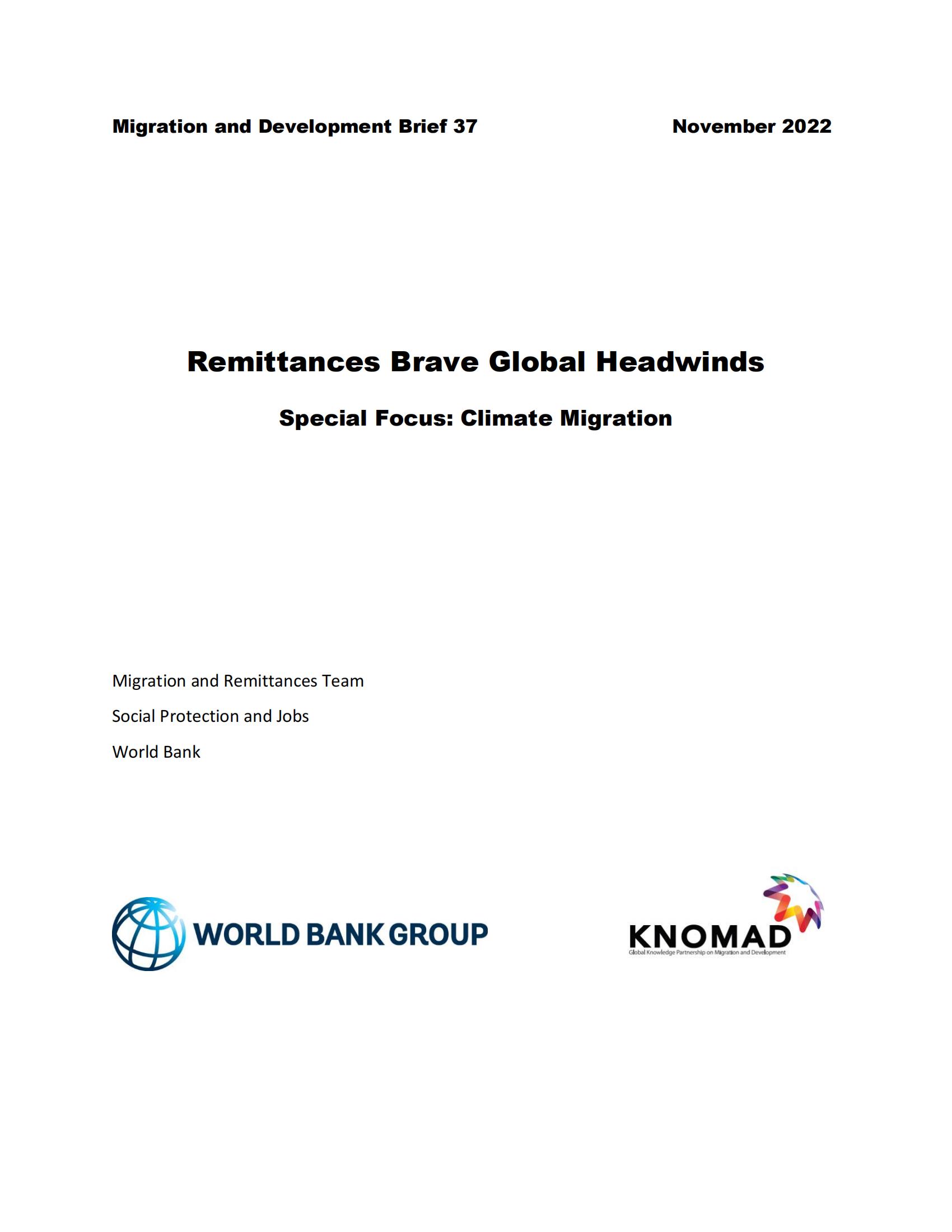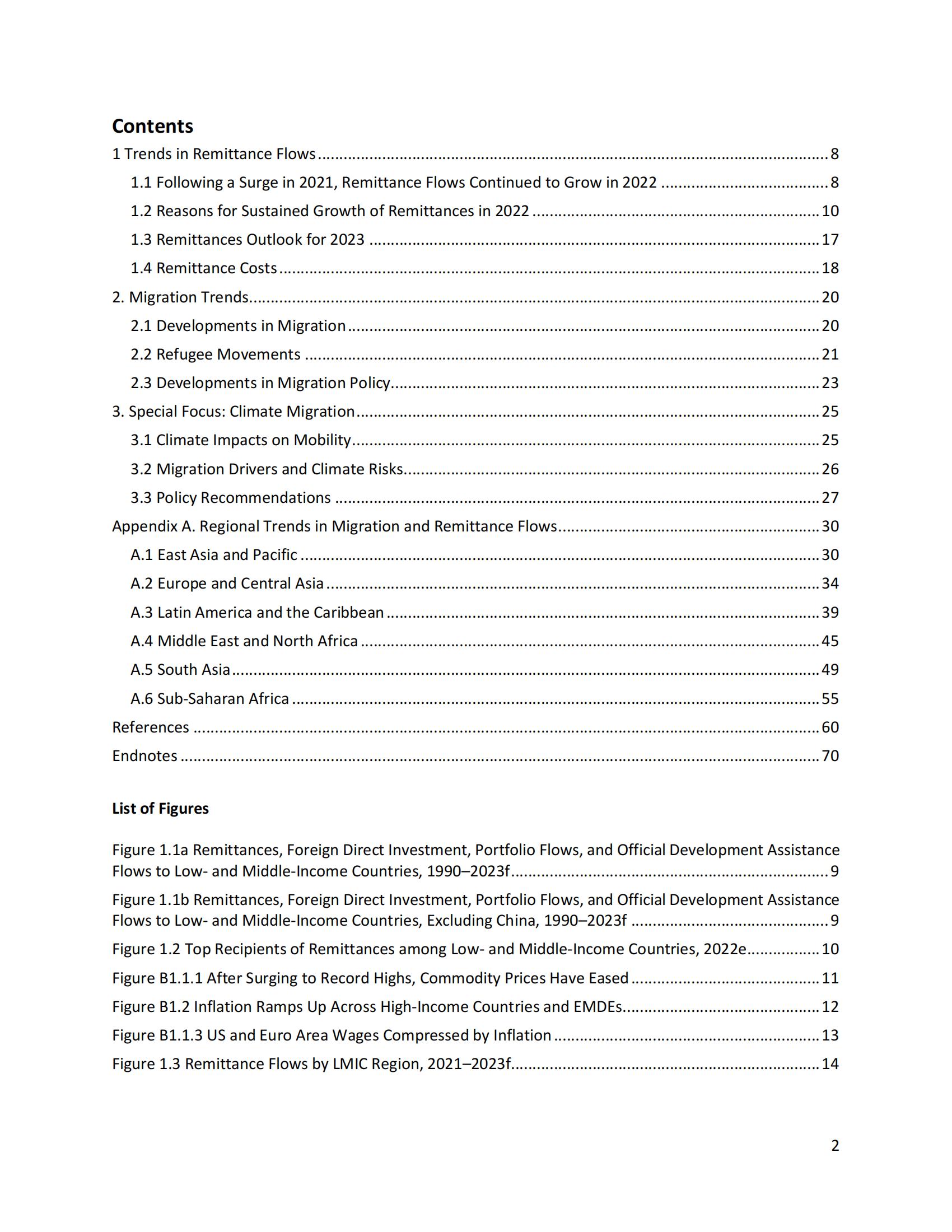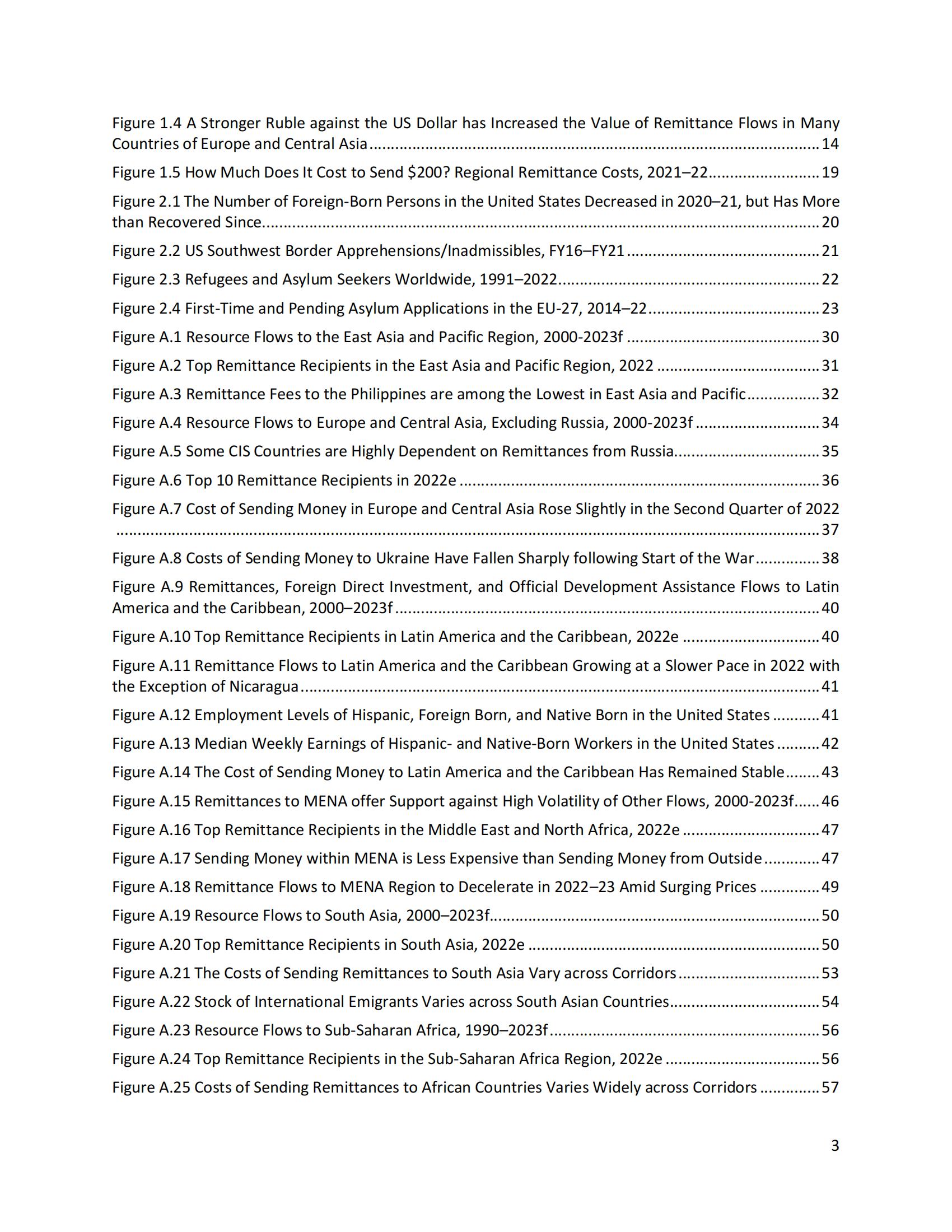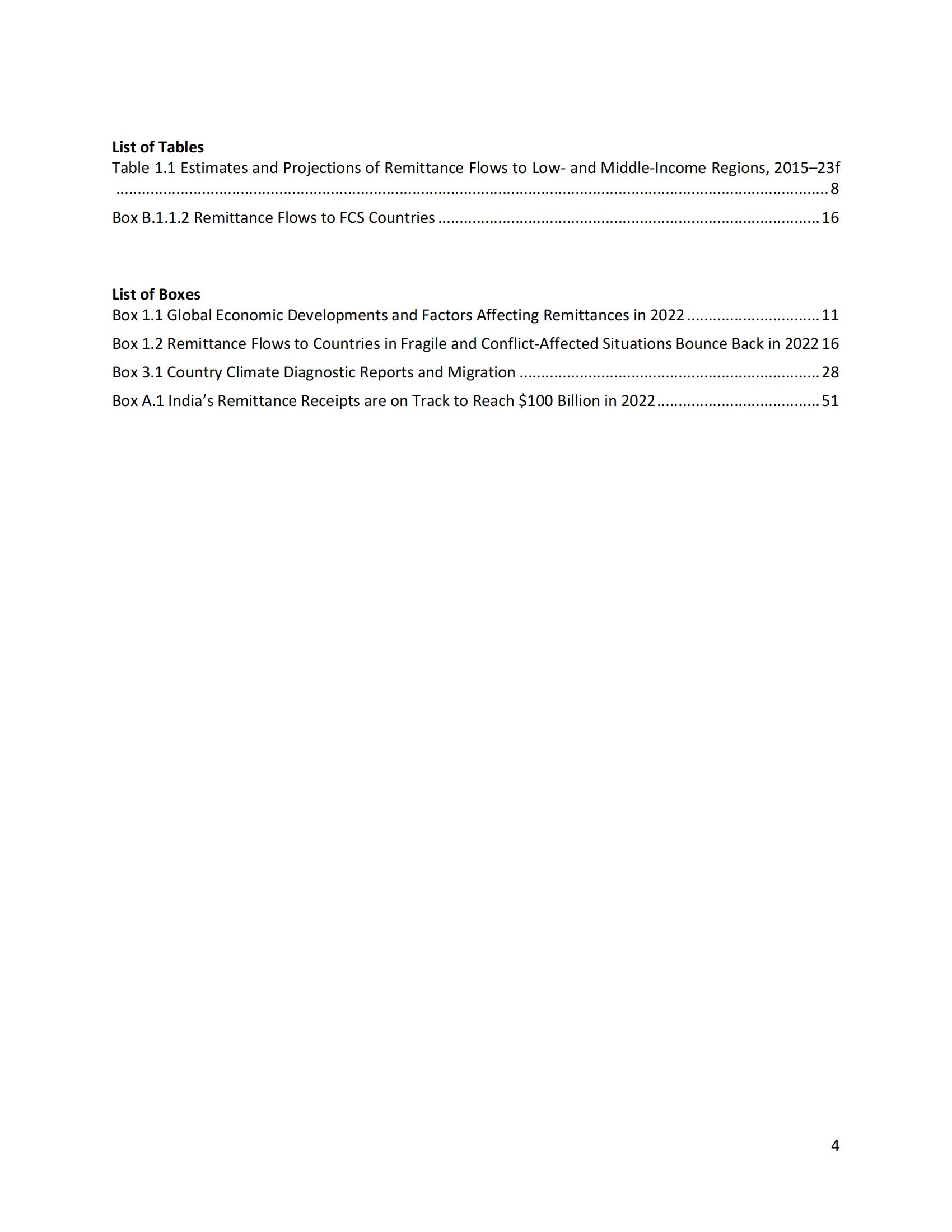This Migration and Development Brief (number 37 in the series) describes key developments in
migration and remittance flows,and related policyand regulatory changes that have occurred since the previous brief, published in May 2022. The effectson migration and remittances of the Russia-Ukraine war,the COVID-19 pandemic,inflation,and other changes in the global economic environment are examined.
Remittances to low- and middle-income countries(LMICs)increased by an estimated 5 percent in 2022, to $626 billion. However, downside risks remain. Migration flows are rebounding from the pandemic-induced decline of 2020-21.Refugee flows have also increased,especially due to the Russia-Ukraine war. In a special feature,the Brief notes that climate change will increase migration,mostly within countries. The poorest are likely to be most affected. National and regional development strategies need to be viewed through a climate migrationlens. Considering the global nature and expected trajectory of migration, the case for creating a global concessional financing facility for migration remains strong.
Remittances. The growth of global remittance flows is expected to be 4.9 percent in 2022.Remittance flows to developing regions were shaped by several factors in 2022. Besides the determination of migrants to help their families back home,a gradual reopening of various sectors in host countries’economies expanded many migrants’ income and employment situation.On the other hand,rising prices adversely affected migrants’ real incomes and their remittances. In Russia, rising oil prices and continued demand for migrant workers increasedthe flow of remittances to Central Asian countries. The appreciation of the ruble against the US dollar translated into higher value,in US dollar terms,of outward remittances from Russia to Central Asia.In Europe,a weaker euro had the opposite effect, reducing the US dollar valuation of remittance flows to North Africa and elsewhere.Remittances received by migrants in transit contributed to strong flows in Mexico and Central America.Finally,in many countries that experienced scarcity of foreign exchange and multiple exchange rates, officially recorded remittance flows declined as flows shifted to alternative channels offering better exchange rates. Growth in remittances is expected to moderate to 2 percent in 2023,as GDP growth in high-income countries continues to slow.Downside risksremain substantial,including a further deterioration of the war in Ukraine, volatile oil prices and currency exchange rates, and a deeper-than-expected downturn in major high-income countries.



本文来自知之小站
报告已上传知识星球,微信扫码加入立享4万+深度报告下载及1年更新。3天内不满意退出星球款项原路退回,欢迎试用。到期续费仅需5折
(如无法加入或其他事宜可联系zzxz_88@163.com)
